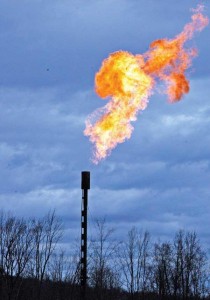The Eagle Ford Task Force is turning its attention to natural gas flaring. Texas set a record for flaring permits earlier in the year and the trend will continue until pipelines and gathering systems catch up with drilling.
In oil producing areas like the Eagle Ford, drilling and first production is reached weeks and sometimes months before pipeline companies get natural gas infrastructure to the area. Oil can be moved with a truck, but natural gas needs pipelines.
Flaring is commonplace in oil producing areas and is very rarely abused. More often than not, flaring lasts only a few days or weeks. It is in the operators best interest to get paid for natural gas they're producing.
The task force plans to work with companies to increase the use of natural gas generators on location. On-site generators can power electric machinery and will help limit the amount of flaring.
A main concern for the region is whether or not the Eagle Ford will push the San Antonio Metro Area over the federal limits for ozone standards. The ozone issue alone will have politicians anxious.
Comments from David Porter indicate the TX RRC is going to review its rules to make sure they are relevant in the modern shale era. I suspect there won't be major changes. Even if big changes come, infrastructure in the Eagle Ford will be catching up and flaring won't be near as prevalent by the time any legislation is enacted.

